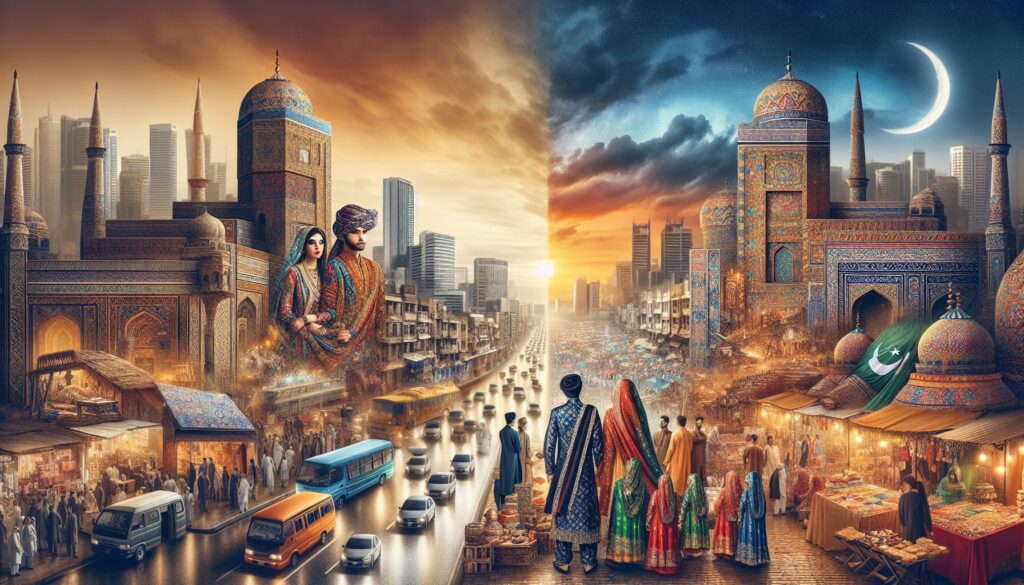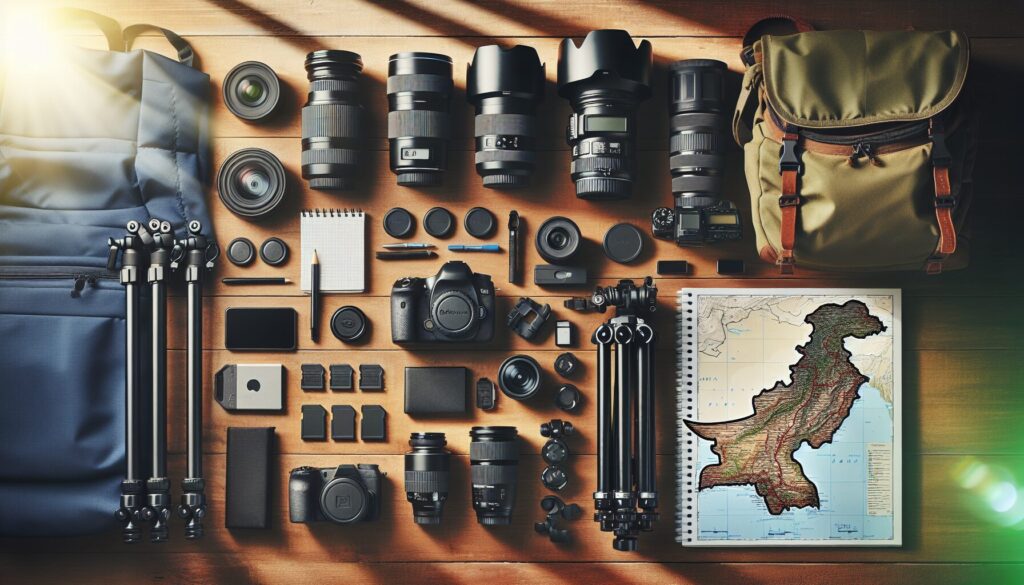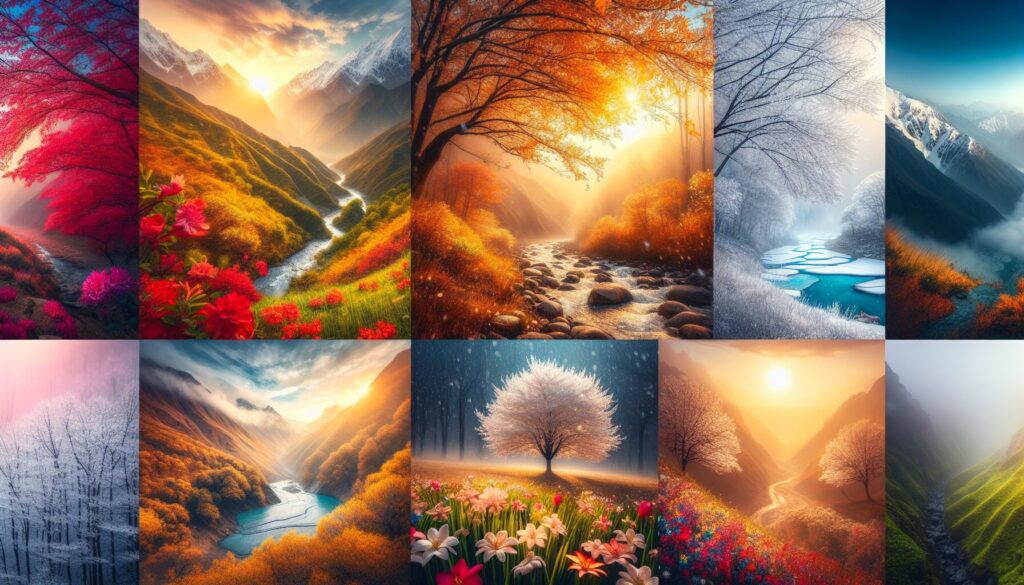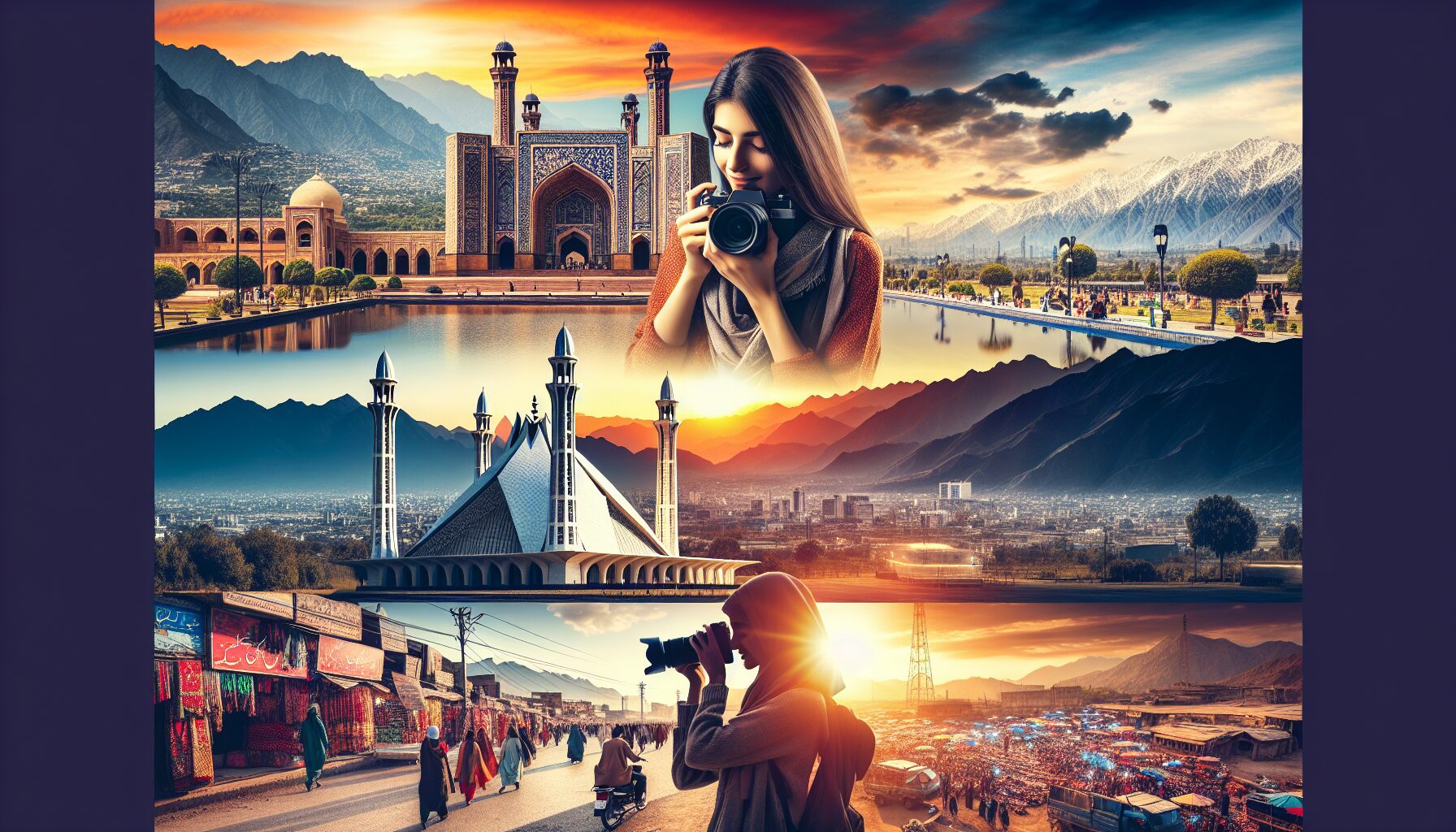When you think about photography in Pakistan, it’s like opening a treasure chest of vibrant colors, diverse landscapes, and rich cultures. Have you ever tried capturing the sun casting its golden hue on the majestic peaks of the Karakoram Range? Using a Canon EOS R5 with a 24-70mm f/2.8 lens, you can play around with settings like ISO 100, f/16, and a shutter speed of 1/30s to get that perfect shot. The trick is to wait for the right moment when the light paints a masterpiece over the snow-capped mountains.
And oh, the bustling streets of Lahore are a photographer’s paradise! The colors, the people, the chaos—it’s all so alive. I remember wandering through the narrow lanes of the Walled City with my trusty Nikon D850. Switching to a 50mm f/1.8 lens, I focused on capturing candid moments. I set my camera to ISO 400, f/2.8, and a shutter speed of 1/60s to freeze the vibrant life in those streets. It’s amazing how each corner tells a different story, especially around historical sites like the Lahore Fort.
Furthermore, if you’re into landscape photography, the serene beauty of Skardu will leave you speechless. The crystal-clear waters of Shangrila Lake are a dream come true for any photographer. I remember using a polarizing filter to enhance the colors and reduce reflections in my shots. Setting my Sony A7 III to ISO 200, f/11, and a shutter speed of 1/125s, I was able to capture the breathtaking scenery. The tranquility of the place is unparalleled, making it a must-visit spot in your photography journey.
Additionally, the cultural richness of Pakistan is something you can capture in frames. From the stunning architecture of the Faisal Mosque in Islamabad to the vibrant festivals across the country, every moment is worth preserving. Whether you’re a professional or just starting out, the possibilities are endless. So grab your camera, explore the diverse landscapes, and let the magic of Pakistan inspire your next photographic adventure!
Top Scenic Locations for Landscape Photography
When I first set foot in the breathtaking landscapes of Pakistan, I was armed with my trusty Canon EOS R5 and a 24-70mm f/2.8 lens. The diverse topography of this country is a photographer’s paradise, offering countless opportunities to capture stunning images. One of my favorite spots is the Fairy Meadows, a serene alpine meadow located in the Gilgit-Baltistan region. The view of Nanga Parbat, the world’s ninth-highest mountain, is nothing short of spectacular. For best results, I recommend using a wide-angle lens to capture the vastness of the scene. Set your ISO to 100, aperture to f/11 for depth, and a shutter speed of 1/125s to freeze motion.
Another gem is the Hunza Valley. It’s a place where the vibrant culture meets the majesty of nature. The Karakoram Highway winds through this region, providing countless vantage points. On my last visit, I tried a polarizing filter to reduce glare and enhance the colors of the lush landscapes. For those magical sunrise shots, set your camera on a tripod, use a low ISO, and a longer exposure to capture the soft hues.
Exploring the Coastal Beauty
Moving towards the south, the Makran Coastal Highway offers a contrasting scene with its rugged cliffs and turquoise waters. When I was there, I found the lighting conditions to be challenging due to the harsh midday sun. A neutral density filter worked wonders, allowing me to use slower shutter speeds to capture the movement of the waves. Don’t forget to experiment with different angles to find unique perspectives.
In the heart of Punjab, the Salt Range near Khewra is a lesser-known spot but offers dramatic landscapes. The formations here are a delight for photographers looking for something off the beaten path. Using a telephoto lens can help isolate interesting details in the terrain. On my visit, I shot at f/8, ISO 200, and 1/250s to capture the texture of the salt formations.
If you’re in the mood for some urban landscapes, Lahore and Islamabad offer a mix of historical and modern architecture. The Badshahi Mosque in Lahore provides a stunning backdrop for sunset shots. I often use a 50mm f/1.8 lens here, setting the aperture wide open to play with depth of field. The soft glow of the setting sun accentuates the mosque’s intricate details beautifully.
Each of these locations provides a unique canvas for landscape photography. With the right equipment and settings, you can capture images that reflect the true essence of Pakistan’s diverse beauty. Whether you’re a seasoned pro or a budding enthusiast, these spots are sure to inspire your photographic journey.
Cultural and Urban Photography Opportunities

When it comes to capturing the vibrant tapestry of Pakistan’s urban and cultural life, there’s nothing quite like strolling through the bustling streets with your camera in hand. A personal favorite of mine is the lively city of Lahore. Armed with my Canon EOS R5 and a versatile 24-70mm f/2.8 lens, I love exploring the maze of alleys in the Old City. Here, the possibilities are endless. The intricate details of the Wazir Khan Mosque, with its stunning frescoes, are a dream to photograph, especially in the early morning light. I usually set my ISO to 100 and opt for an aperture of f/11 to capture the rich colors and details in high resolution.
Additionally, Karachi offers a unique urban landscape that’s just waiting to be captured. The city is a blend of the modern and the historic, with high-rise buildings standing tall alongside colonial-era structures. You can’t miss the bustling Empress Market, where I once spent an entire afternoon shooting with my 50mm f/1.8 lens. The market’s vibrant colors and eclectic mix of goods made for some unforgettable shots. If you’re looking to capture the essence of urban life, adjusting your camera settings to a fast shutter speed, around 1/250s, can help freeze the energy of the crowds.
However, it’s not just the architecture and people that make these cities wonderful photography spots. The cultural festivals, like Basant in Lahore and the Karachi Literature Festival, offer an incredible array of photo opportunities. A tip I’ve found useful is to use a polarizing filter to manage reflections and enhance the sky’s contrast, making your festival shots pop even more. Don’t forget to shoot in RAW format for greater flexibility during post-processing.
Exploring Hidden Gems
Beyond the obvious spots, cities like Islamabad have hidden gems perfect for capturing unique cultural moments. Lok Virsa Museum, for instance, is a treasure trove of artifacts and exhibits showcasing Pakistan’s diverse cultures. An afternoon here with a wide-angle lens, such as a 16-35mm f/4, allows you to capture entire displays in one frame. Furthermore, Islamabad’s urban landscape, with its blend of planned sectors and natural beauty, provides ample opportunities for stunning shots. The lush greenery of Daman-e-Koh offers panoramic views that are best shot during the golden hour for that magical light.
For those interested in diving deeper into cultural and urban photography in Pakistan, it’s essential to understand the local customs and traditions. National Geographic highlights the importance of cultural sensitivity while photographing in diverse settings. Respect and understanding can lead to more genuine interactions and, ultimately, better photographs. If you’re eager to explore more tips and insights on photography in Pakistan, don’t miss out on our comprehensive guide that delves deeper into the subject.
Finally, don’t forget to take a break at one of the many chai stalls you’ll encounter. These are perfect spots not just for a refreshing cup of tea, but also for candid street photography. Capturing the daily life of locals over a shared cup of chai can result in some of the most authentic images you’ll take. Whether in the heart of Lahore or the streets of Karachi, Pakistan’s vibrant cities are brimming with opportunities for cultural and urban photography enthusiasts. So grab your camera, and start exploring!
Essential Gear and Preparation Tips

When planning a photography adventure in Pakistan, having the right gear is absolutely essential. Imagine this: you’re exploring the vibrant streets of Lahore, capturing the intricate Mughal architecture with a Canon EOS R5. This mirrorless camera, renowned for its superb image quality and 45-megapixel sensor, is perfect for those rich, detailed shots. Pair it with a 24-70mm f/2.8 lens, and you’re all set for a versatile range of scenarios, from wide cityscapes to close-up portraits.
If you’re heading to the breathtaking landscapes of Hunza Valley, a lightweight tripod is a must for those stunning long-exposure shots. I remember setting up my Manfrotto BeFree tripod on a serene morning by Attabad Lake. The mirror-like water and towering peaks were captured perfectly with a slow shutter speed of 1/30s. Don’t forget to pack a polarizing filter to cut through the glare and enhance those vivid blue skies.
Preparing for the Journey
Before you venture out, ensure your camera bag is organized and ready. A weather-sealed backpack, like the Lowepro ProTactic, will protect your equipment from dust and sudden rain. Pakistan’s diverse climate demands preparation. In the sweltering heat of Karachi, your gear might need a lens cleaning kit to avoid dust spots ruining your shots. Conversely, in the chilly heights of Skardu, extra batteries are crucial as cold weather can drain them quickly.
Memory cards are your best friend when you’re out capturing the beauty of Pakistan. Always carry spares; I can’t stress this enough! On a trip to Fairy Meadows, I almost ran out of storage while photographing the majestic Nanga Parbat. SanDisk Extreme Pro cards are reliable, offering fast write speeds to handle high-resolution images and 4K video effortlessly.
Additionally, make sure your smartphone is charged and loaded with apps like Google Maps for navigation. Offline maps can be a lifesaver in remote areas without cellular coverage. A portable charger ensures you’re never out of power when you stumble upon an unexpected photo opportunity.
Lastly, respect the culture and the people. Always ask for permission before photographing locals, particularly in rural areas. A little Urdu can go a long way in making connections, and it’s always appreciated when you greet someone with a friendly “Assalamu Alaikum”. This not only enriches your travel experience but also opens doors to more authentic interactions and memorable shots.
Seasonal Considerations for Photographers

Understanding the seasons in Pakistan is crucial if you’re planning to capture the country’s breathtaking beauty through your lens. Each season brings a unique charm, offering diverse opportunities for photographers. Let’s dive into the seasonal nuances that can enhance your photography experience in Pakistan.
Spring is a magical time, especially in the northern regions. The blooming flowers and lush green landscapes offer vibrant colors. I remember capturing the stunning apricot blossoms in Hunza Valley using my Canon EOS R5 with a 50mm f/1.8 lens. The soft background blur achieved with an aperture of f/1.8 added an artistic touch to my compositions. Consider using a polarizing filter to reduce glare and enhance colors in your springtime shots. It’s a time when nature awakens, making it perfect for nature and landscape photography.
Summer offers a different vibe, especially in places like Swat Valley and the majestic Karakoram Range. Early mornings provide soft lighting, ideal for capturing landscapes. I often set my camera to ISO 100, f/16, and 1/30s to get those sharp and detailed images. The golden hour is also a must, as sunsets create dramatic skies. Remember to keep your equipment protected from dust and extreme heat, especially if you’re venturing into desert areas like Thar.
Autumn and Winter: A Photographer’s Dream
Autumn in Pakistan, particularly in the northern areas, is like a painter’s palette. The changing leaves in Gilgit-Baltistan offer a spectrum of warm hues. I once used a wide-angle lens to capture the vastness of the autumn landscape, emphasizing the contrast between the golden leaves and the clear blue sky. It’s essential to experiment with different angles and perspectives during this season.
Winter transforms the northern regions into a snowy wonderland. The snow-capped peaks of the Himalayas and Karakoram offer breathtaking views. When shooting in snowy conditions, I often overexpose my shots by a stop or two to ensure the snow appears white rather than gray. A tripod is indispensable for achieving sharp images in low-light conditions, especially during those magical early morning hours. Additionally, investing in a weather-sealed camera body and lens will protect your gear from the harsh elements.
The diverse seasons in Pakistan offer endless possibilities for capturing stunning images. Each season provides unique photography spots, making it a top destination for photographers. Whether you’re drawn to the vibrant blooms of spring or the serene snow of winter, there’s always something extraordinary to capture. For more tips on photography and cultural insights in Pakistan, check out your natural keyword-rich anchor text here.
Safety and Etiquette for Photography in Pakistan
Traveling through Pakistan with your camera can be an exhilarating adventure! However, it’s super important to remember the local norms and safety tips to ensure a smooth experience. I remember my first trip to Lahore. The bustling streets were a dream for any photographer, but I quickly learned to keep my Canon EOS R5 close, especially in crowded areas like the Lahore Fort. With a 24-70mm f/2.8 lens, I captured the intricate Mughal architecture while ensuring my gear was secure.
Being mindful of the local etiquette is crucial. In many areas, people are incredibly welcoming, but it’s polite to ask before snapping photos, especially in rural or sensitive locations. For instance, while photographing the vibrant bazaars in Karachi, I used a 50mm f/1.8 lens to get candid shots. Before clicking away, I made sure to interact with the locals, showing them the photos on my camera screen. It was a great way to break the ice and show respect for their culture.
Respect and Awareness
Understanding cultural sensitivities can enhance your photographic journey. In places like Swat Valley, it’s wise to dress modestly and respect private spaces. I used a polarizing filter to capture the stunning landscape without intruding on people’s privacy. Additionally, carrying a tripod in some areas might attract attention, so I often opted for a handheld approach with a fast shutter speed, like 1/250s, to ensure sharp images.
Safety is another aspect you shouldn’t overlook. While most parts of Pakistan are safe, it’s always best to travel in groups, especially in remote areas. During a trip to the Hunza Valley, I was grateful for my lightweight gear, which included a compact camera bag that allowed me to move swiftly. Always keep an eye on your belongings and avoid displaying expensive equipment in less crowded spots.
Moreover, be prepared for varied lighting conditions. I love using an ND filter during the bright afternoons in Islamabad, allowing me to shoot at wider apertures like f/4 without overexposing the image. This technique is especially handy when you’re exploring the serene Faisal Mosque, one of the most iconic photography spots in the city.
In summary, taking photos in Pakistan is about more than just capturing stunning landscapes or vibrant street scenes. It’s about immersing yourself in the culture, respecting the local customs, and being aware of your surroundings. Keep these tips in mind, and you’ll have an unforgettable experience capturing the heart and soul of this beautiful country.
Conclusion
Exploring the vibrant landscapes and bustling cities of Pakistan through the lens of a camera is an adventure like no other. Whether you’re capturing the majestic peaks of the Karakoram Range or the intricate beauty of Badshahi Mosque, the possibilities are endless. I remember my first visit to Skardu with my trusty Canon EOS R5, paired with the versatile 24-70mm f/2.8 lens. The crisp morning air was perfect for setting the ISO to 100 and using a polarizing filter to reduce glare from the snow-capped mountains. The results were breathtaking!
Moreover, urban photography enthusiasts will find Karachi’s streets filled with life and color. Once, while wandering through Saddar, I used a 50mm f/1.8 lens on a Nikon D850 to capture candid shots of bustling markets. The lens’s wide aperture allowed me to focus sharply on my subject while blurring the busy background, creating dynamic and engaging photos. And let’s not forget Lahore’s Lahore Fort, where the golden hour light paints the Mughal architecture in warm hues. Here, experimenting with a tripod to keep the shutter open for longer at f/16 can beautifully capture the fort’s essence against the evening sky.
In addition, Pakistan’s diverse culture and landscapes offer countless opportunities for creative expression. From the serene beauty of the Hunza Valley to the lively streets of Islamabad, each location tells a unique story. By incorporating advanced techniques like HDR imaging or long exposures, photographers can truly bring out the magic of these places. So grab your camera, charge those batteries, and set off on an unforgettable photographic journey across this incredible country!
Continue Exploring
Uncover the vibrant tapestry of Pakistan's cultural heritage through the lens of portrait photography. Dive into a world where every image tells a unique story, capturing the essence of a rich and diverse tradition.
Frequently Asked Questions
What are the best photography locations in Pakistan for capturing breathtaking landscapes?
Pakistan is home to some of the most stunning landscapes in the world. For breathtaking photography, consider visiting the Hunza Valley, Skardu, and the Fairy Meadows. Each of these locations offers unique natural beauty, from snow-capped mountains to lush green valleys, perfect for landscape photography.
How can I prepare for a photography trip to Pakistan to capture cultural and historical sites?
To capture the rich cultural and historical sites of Pakistan, plan your trip by researching the iconic locations such as Lahore Fort, Badshahi Mosque, and Mohenjo-daro. Make sure to obtain the necessary permits where required, respect local customs, and consider the best times of day for lighting to enhance your photographs.
What are some tips for wildlife photography in Pakistan's national parks?
When engaging in wildlife photography in Pakistan’s national parks like Khunjerab National Park or Deosai National Park, patience and preparation are key. Bring the right equipment, such as a telephoto lens, and research the best times for animal activity. Always maintain a respectful distance from wildlife to ensure both your safety and that of the animals.


Leave a Reply